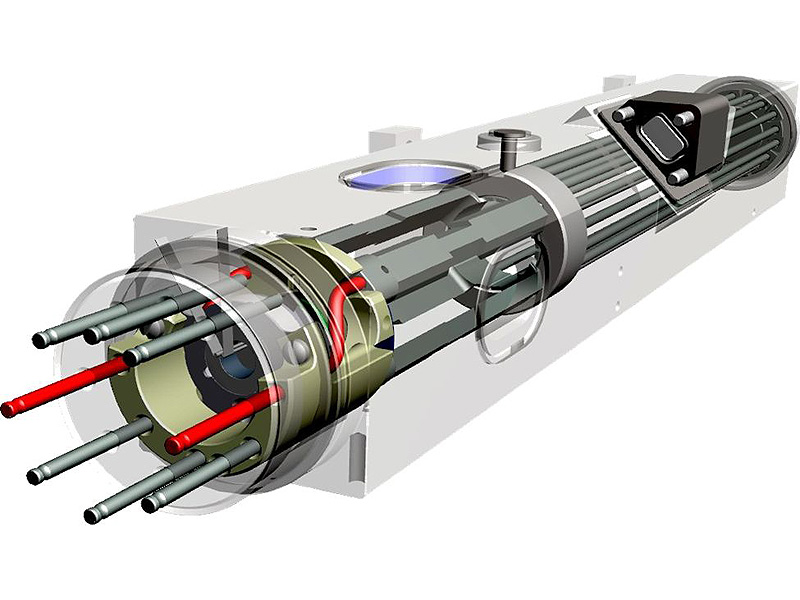A computer-aided design, or CAD, drawing of the linear ion trap of the clock — the “heart” of the Deep Space Atomic Clock’s physics package — is slightly smaller than two rolls of quarters laid side by side. The DSAC project is a small, low-mass atomic clock based on mercury-ion trap technology that will be demonstrated in space, providing unprecedented stability needed for next-generation deep space navigation and radio science. (Image credit: NASA/JPL)
Home A computer-aided design, or CAD, drawing of the linear ion trap of the clock — the “heart” of the Deep Space Atomic Clock’s physics package — is slightly smaller than two rolls of quarters laid side by side. The DSAC project is a small, low-mass atomic clock based on mercury-ion trap technology that will be demonstrated in space, providing unprecedented stability needed for next-generation deep space navigation and radio science. (Image credit: NASA/JPL) A computer-aided design, or CAD, drawing of the linear ion trap of the clock -- the "heart" of the Deep Space Atomic Clock's physics package -- is slightly smaller than two rolls of quarters laid side by side. The DSAC project is a small, low-mass atomic clock based on mercury-ion trap technology that will be demonstrated in space, providing unprecedented stability needed for next-generation deep space navigation and radio science. (Image credit: NASA/JPL)
A computer-aided design, or CAD, drawing of the linear ion trap of the clock — the “heart” of the Deep Space Atomic Clock’s physics package — is slightly smaller than two rolls of quarters laid side by side. The DSAC project is a small, low-mass atomic clock based on mercury-ion trap technology that will be demonstrated in space, providing unprecedented stability needed for next-generation deep space navigation and radio science. (Image credit: NASA/JPL)


